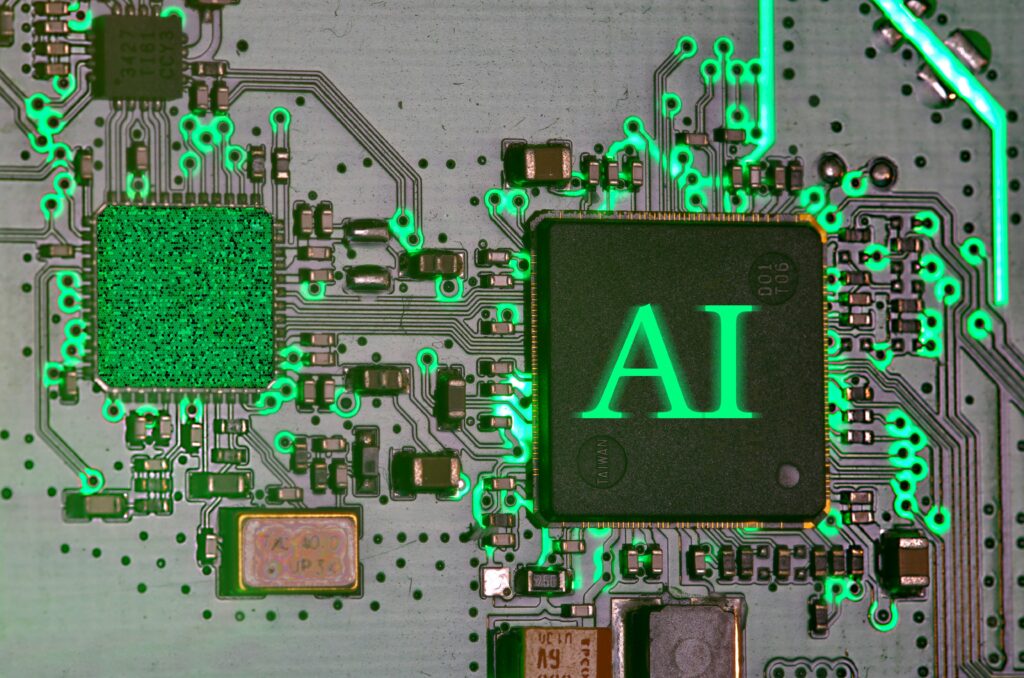The era of true on-device artificial intelligence is no longer a futuristic dream; it’s rapidly becoming a tangible reality, especially within the dynamic world of gadgets and hardware. Chipmakers are embedding increasingly powerful Neural Processing Units (NPUs) or dedicated AI engines directly into their latest silicon, moving sophisticated AI tasks from the cloud to the palm of your hand. This paradigm shift, spearheaded by recent announcements from industry titans, promises to redefine everything from how our smartphones capture photos to how smart assistants understand our commands.
For instance, late last year saw Qualcomm unveil its Snapdragon 8 Gen 3 Mobile Platform, boasting a significantly enhanced NPU designed for multi-modal generative AI models. Similarly, Apple’s A17 Pro chip, powering its latest iPhones, features a 16-core Neural Engine capable of nearly 35 trillion operations per second, enabling advanced machine learning tasks on the device. MediaTek has also been a strong contender, integrating powerful AI Processing Units (APUs) into its Dimensity series, aiming to bring high-performance AI to a broader range of devices. These developments signal a concerted effort across the industry to equip our daily gadgets with the intelligence needed to handle complex, real-time AI computations without constant reliance on internet connectivity.
Driving Efficiency and Privacy: The Core Advantages
The transition to on-device AI-powered chips offers a multitude of compelling advantages that go beyond mere computational power. One of the most significant benefits is enhanced privacy. By processing data locally, sensitive user information doesn’t need to be sent to remote cloud servers, drastically reducing the risk of data breaches and offering users greater peace of mind. Moreover, on-device processing leads to significantly lower latency. Tasks like real-time language translation or instant image enhancement can occur almost instantaneously, as there’s no round-trip delay to a distant data center.
Efficiency is another critical factor. While complex AI models can be power-intensive, dedicated NPUs are optimized for these tasks, often consuming less power than general-purpose CPUs or GPUs trying to achieve the same results. According to recent market analysis by companies like IDC and Gartner, the market for AI-enabled edge devices is projected to grow exponentially, driven by these very advantages, along with the burgeoning demand for personalized user experiences. This trend empowers gadgets to run sophisticated AI applications, such as advanced computational photography that enhances images before you even press the shutter, highly accurate voice assistants that understand nuances, and even on-device generative AI features for image editing or personalized content creation, all without draining your battery or compromising your data.
Reshaping Industries and User Experiences
The impact of AI-powered chips is already rippling across various industries and fundamentally altering user experiences. In the realm of smartphones, photographic capabilities are being revolutionized. Beyond simple filters, on-device AI enables features like semantic segmentation (understanding different elements in an image), super-resolution, and advanced noise reduction, making professional-grade photos accessible to everyone. Gaming is seeing improved graphics, dynamic environmental rendering, and smarter NPCs thanks to local AI processing. Virtual and augmented reality (VR/AR) devices are benefiting from real-time scene understanding and object tracking, creating more immersive and responsive environments.
Beyond entertainment, these chips are fostering an ecosystem for entirely new applications. Developers can now design apps that leverage the full power of on-device AI for personalized health monitoring, predictive text that genuinely anticipates user needs, and even AI companions that learn and adapt over time, all operating swiftly and securely. This shift decentralizes AI, making it more robust and accessible, pushing the boundaries of what consumer electronics can achieve. For deeper insights into the future of edge computing, explore ByteTechScope’s Edge AI Insights.
The Road Ahead: Challenges and Expert Outlook
While the future of AI-powered chips looks incredibly promising, challenges remain. Optimizing complex AI models to run efficiently on resource-constrained devices, managing heat dissipation, and ensuring broad compatibility across different hardware platforms are ongoing hurdles. However, expert consensus points towards a future dominated by increasingly specialized and powerful edge AI hardware. Analysts predict that future iterations will see even greater integration, with AI capabilities extending to more nuanced tasks and smaller form factors.
Leading chipmakers like Qualcomm are at the forefront of this innovation, regularly showcasing their latest advancements and pushing the boundaries of what’s possible. The trajectory is clear: AI-powered chips are not just an enhancement but a foundational shift that will continue to embed intelligence deeply into the fabric of our everyday gadgets. This will lead to devices that are not only smarter but also more intuitive, personalized, and seamlessly integrated into our lives, making technology work harder and smarter for us.

